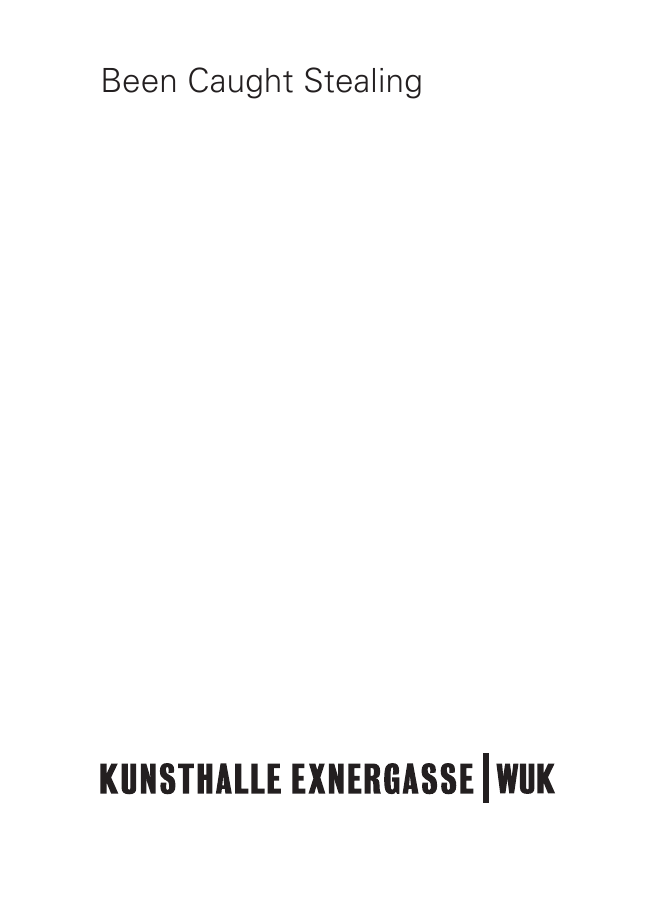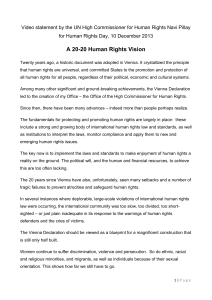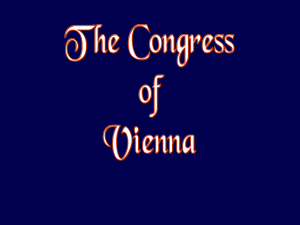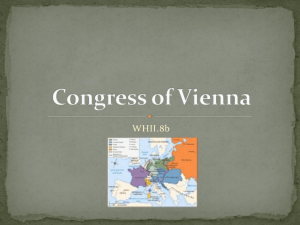Been Caught Stealing
advertisement

Been Caught Stealing Artists 18+ Shahin Afrassiabi Carrick Bell Harry Burden Herbert De Colle Marc-Alexandre Dumoulin Oliver Laric Maruša Sagadin Curated by Hannes Ribarits and Li Tasser Opening May 7, 2014,19.00 from 22.00 dj-set runningmermaids Exhibition May 8 – June 14, 2014 I walk right through the door. Walk right through the door. Hey all right! If I get by, it's mine. Mine all mine! Jane’s Addiction, Been Caught Stealing, 1990 Been Caught Stealing The video for the song »Been Caught Stealing« by the band Jane's Addiction was one of the most influential music videos of the early 90s slacker/grunge subculture. Played in heavy rotation on MTV, it simultaneously ushered in the music channel's »alternative« phase, which for a brief period saw a perhaps unique yet not entirely unproblematic melding of mainstream and underground culture. These conditions allowed the development of an alternative sphere molded by not only a post-hippie sensibility, but also by the Reagan era and its countercultures. At the same time, MTV's interactive formats gave a first indication of the neoliberal consequences of virtual reality, social media and the market strategy-based transposition of Hollywood blockbuster formulas into gaming culture. Taking its title from the video »Been Caught Stealing«, the exhibition at Kunsthalle Exnergasse uses this contradictory state of affairs as a starting point, bringing together work by artists whose practice has been informed by this particular constellation. Focusing on the political relevance of the mainstream, familiar visual languages are employed disruptively, filtered for their subversive potential, and broken down into their component parts. The at times intense process of socialization through computer games in the late 80s and early 90s was likewise not without consequences for the artists' aesthetic systems. Particularly in terms of conceiving virtual space and interactivity, adventure and role-playing games and the like served as preparation for many features that meanwhile have been adopted quite naturally in social media. Yet the understanding of space and interactivity in these games was often surprisingly subversive—there is almost always a prototypical anti-hero, the underdog, who can only reach the goal by congenially circumventing the rules. Similarly, music video as a fledgling genre long enjoyed the advantage of not having its political potential taken seriously, therefore giving it much greater leeway than was available to mainstream Hollywood films. This brief vacuum gave rise to a specific idea of artistic freedom, coupled with taking pleasure in an approach that employed playful trickery and the slackerly killing of time as a means of subversion. Ultimately, it is about ostensibly harmless but nonetheless significant interactions in the tightly woven network of the entertainment industry—in other words, getting away with it! The exhibition thus sets out in search of a sphere in which political and entertainment blur, regarding collectively experienced pop culture as a revisitable point of interaction, where categories like highbrow and lowbrow disappear, respectively switching between them becomes effortless. 18+ The Los Angeles-based duo »18+« operates at the interface of music and art video. The material for their videos is taken from CGI animations and found footage. A permanent part of the band's visual vocabulary are Second Life interactions—which at this point evince a certain retro aesthetic. In »nectar« (feat. Aids-3D), for example, identical bikini-clad CGI avatars dance their way through virtual space. This purposely exaggerated form of metasexism, combined with a fetishistic, overwrought relationship to consumer goods, results in a total detachment from the human body. Ultimately, however, it is about the desire to articulate the relationship between the body and virtual reality—or, as Em Rooney puts it in the essay »18+ Whatever Bodies, Races, and Things«: a vision of the »posthuman« that is both nihilistic and erotic. Samia Mirza, born in 1986 in Honolulu, USA, Justin Swinburne, born 1985 Thousand Oaks, United States. Living and working in Los Angeles; 2008, The School of the Art Institute of Chicago (BA). Exhibitions and performances include: »40 Years Artists Space Program Fund«, Artists Space, New York; »89plus Americas Marathon: Autoconstrucción«, Fundación Jumex, Mexico City; »18 + Chime«, Art Basel , Basel; Lithuanian and Cyprus Pavilion, 55th Venice Biennale, Venice. Discography: Self-Released: MIXTAP3, MIXTA2E, EP1, M1XTAPE. Videostill from »Nectar«, ft. Aids-3d, 2012 »The Dress is a Building«, performance at the opening of »Radical Substance«, Soy Capitán, Berlin, 2014. Photo: Debora Mittelstädt, Courtesy Soy Capitán, Berlin Shahin Afrassiabi In his installations, Shahin Afrassiabi uses simple wooden slats to create »coordinate systems« not unlike a matrix. He uses these as aesthetic blanks, as a manner of socio-cultural zero points, which serve him primarily as a hypothetical projection and referential surface. Into these reduced settings, which are positioned between abstract painting and architectural structure, he places prints of scenes captured by Google Earth, at times faultily composited, which are then photographed off the laptop screen. Afrassiabi deliberately avoids freighting his installations with too much additional information—a mode of reduction to be read as form of refusal. Within the framework of this minimalist system, he explores questions about the relationship between the real and the virtual in terms of spatial as well as political configurations. Born 1963 in Tehran; lives and works in London; 1995-97, Goldsmiths College, London (MA Visual Arts). Exhibitions include: »Radical Substance«, Soy Capitán, Berlin (solo); »Theory of Life«, MOT International, London (solo); »New Values«, Soy Capitán, Berlin (solo); »Active Principles And Forms Of Life«, MOT International, Brussels (solo); »Subject to Form«, Limoncello Gallery, London (solo); Vilma Gold, London (solo); »Hard Labour«, Cell project space; »Showcase preview«, South London Gallery, London; »Early One Morning«, New Generation Group Show, Whitechapel Art Gallery, London. Carrick Bell Carrick Bell is interested in the status of the remake as a supplementary gesture with no inherent necessity. Often held up as an example of contemporary culture’s inability to innovate, the remake is in fact a response to the changing technological conditions of filmmaking. The remake is not a contemporary phenomenon; rather, it has followed closely on the heels of shifts in filmmaking technology (in this way, silent, talkie, and colour versions oft he same film could be released within a fifteen year period). Pushing the interest further, Bell began researching films that had been even more drastically translated—this time, to Broadway. A franchized glitz dealer is a video installation taking 1980’s kitsch classicXanadu as its starting point, directly proceeding to agglomerate various disconnected historical Xanadus: From Coleridge’s opium dream origin story for Kubla Khan, to Ted Nelson’s alternative internet platform Project Xanadu (in development since the 1960’s) and a recent conversion of the film to Broadway in 2007—Xanadu serves as a particularly good case study, in that the film addresses questions of virtuality, parallel planes of existence, and the pitfalls of any attempt to cross these divides. Born in 1981 in Alaska; lives and works in Berlin; 2008, School of the Art Institute of Chicago (MFA). Exhibitions include: »Why did you stop«, Room of Requirement, Berlin; »Multinatural Histories«, Harvard Museum of Natural History, Cambridge; »No More Westerns«, Impakt Festival, Utrecht; »Ellipsis et Cetera«, Charim Gallery, Vienna; »CKTV«, curated by Cleopatras, The 9th Shanghai Biennale, Brooklyn, NY; »The Dominant Culture«, LWZ Projekte, Vienna; »Boundary Issues«, Horton Gallery, Berlin; »Ein Handvoll Leben«, Atelierhof Kreuzberg, Berlin. Videostill from »A franchised glitz dealer«, 2013 »The New Accident (ChromaLusion)«, 2014, Jesmonite (Detail) Harry Burden In his series of recent sculptures »The New Accident« Harry Burden looks at the re-presentation of objects related to concepts such as failure, accidents and mistakes. Fascinated with contemporary technological culture’s obsession with simulation, enhancement, speed and perfection Burden plays with contemporary society’s innate fear of that which is uncontrollable and unknowable. In this sense Burden’s sculptural installations represent the »integral accident« of technological culture which through various means of seduction and co-dependence masks the essential consequences of a speed-obsessed society. The sculptures themselves are positive casts (using Jesmonite) of the damaged negative space from car body parts that have been involved in serious accidents. They are re-worked, restored and re-sprayed back to their »original perfection« using the same fabrication processes that they were originally manufactured with in the first place. Born 1976 in Australia; lives and works in London; 2006-08, Central Saint Martins College of Art & Design, London (MA Fine Art). Exhibitions include: »E-vapor-8«, Site Gallery, Sheffield; »Grand Magasin«, French Riviera, London; »New British Art«, MOCCA, Toronto; »The Dark Cube«, Palais de Tokyo, Paris; »Tropical Disease«, The Forgotten Bar, Berlin; »1000 Years of Fear«, Ve.Sch, Vienna; »This Constant cracking of the surface«, Bargehouse, London; »Seven Wonders of the Ancient World«, Kings Cross, London. Herbert De Colle Viennese artist Herbert De Colle approaches both exhibition and public spaces by means of a similar strategy. His poster projects, placed in urban public space, announce fictional concerts by the likes of Charles Manson—while in fact bands like Franz Ferdinand, for example, might be playing the venue that day—thereby engaging in a targeted way with the perception of public space and time. His installation practice takes a similar approach. Photographic portraits of his queer-influenced circle of friends combine collectively experienced pop- and fan-culture with what has long since become commercialized symbols of the American hippie movement. Often taking the form of cut-outs in multilayered motifs arranged like a wall of posters, De Colle employs peace or yin-yang symbols in different variations. Here too, counterculture and mainstream exist in an intricate dialogue full of contradictions. With his interventions, De Colle places himself like a kind of time traveler at the center of a pop-cultural as well as political turning point—the end of '68 and its neoliberal aftertaste—which he runs through again and again in different variations Born 1978 in Wolfsberg, lives and works in Vienna; 1999-2005, University of Applied Arts, Vienna. Exhibitions include: »Why did you stop«, Room of Requirement, Berlin; »How lonely does it get?...« Blackbridge Offspace, Beijing; Ve.Sch, Vienna (solo); »Fotos —Österreichische Fotografien von den 1930ern bis heute«, 21er Haus, Vienna; »The Dominant Culture«, LWZ Projekte, Vienna; »Future Garden«, Kunstbunker, Nuremberg; »Soufflé, eine Massenausstellung«, Kunstraum Innsbruck; »Hidden Track I«, Boltenstern.Raum/Galerie Meyer Kainer, Vienna; »This is happening«, Galerie Georg Kargl, Vienna. »Untitled«, 2013, b/w photograph »Untitled (Modulation)«, 2013, styrofoam, plaster Marc-Alexandre Dumoulin In his current plaster and styrofoam sculptures, Marc-Alexandre Dumoulin takes as his subject architectural elements such as doors or balustrades—they are mock-ups in the truest sense of the word. In an aesthetic positioned between minimalist and gothic, Dumoulin dysfunctionally installs his door sculptures on walls and floors. The bare surfaces enhance their character toward an elusive, almost virtual materiality. Like props from a fantasy role-playing game, the doors function as links between the virtual world and a classical concept of sculpture. Born in Montreal, lives and works in Vienna; 2007-08, Central Saint Martins College of Art & Design, London (MA Fine Art). Exhibitions include: »Pas De Deux«, Nile Sunset Annex, Cairo; Bar Du Bois, Vienna (solo); Curator's Network 2013, Kunsthalle Exnergasse, Vienna; »The Missing Link«, expo graph, Vienna; »Vienna Entourage«, ArtRaum, Moscow; »Landscapes«, Rondo-Ateliers, Graz; »The Innocents«, Ve.Sch, Vienna (solo); »This Constant cracking of the surface«, Bargehouse, London. Oliver Laric Berlin-based artist Oliver Laric deals with the perception of pictorial hierarchies and the assignation of meaning to them. Not without irony, he places the concept of authenticity up for discussion. In a project launched in 2012, for instance, he had 3D scans made of objects from the collections of the »Usher Gallery« and »The Collection« in Lincoln and offered these as downloads on a website. As a result, they are freely available, but also deliberately open to manipulation, both as actual 3D prints as well as digital models smuggled back into virtual space. They then reappear, for example, as sculptures in a private virtual museum, and in keeping with Laric's intention, are thereby returned once more entirely to the public domain as versions, not as a copy. Born 1981 in Innsbruck; lives and works in Berlin; 2005, University of Applied Arts, Vienna. Exhibitions include: »Oliver Laric: Lincoln 3D scans«, The Collection and Usher Gallery, Lincolnshire (solo); »5«, Seventeen Gallery, London (solo); »A Sense of Things«, Zabludowicz Collection, London; »Damn braces: Bless relaxes«, Whitechapel Gallery, London; »Speculations on Anonymous Materials«, Fridericianum, Kassel; »der schein | glanz, glamour, illusion«, Kestner Gesellschaft, Hannover; »Be Water My Friend«, Tanya Leighton, Berlin (solo); »Imagine the Imaginary«, Palais de Tokyo, Paris; »The Feverish Library«, Friedrich Petzel Gallery, New York »Lincoln 3D Scans«, 2013, wallpaper. Photo: Stephen White »die B.I.G.«, (Detail), 2014. Photo: Chris Fladung Maruša Sagadin Maruša Sagadin's sculptures and installations are created using materials and methods borrowed from architecture and construction. Her repertoire, among other things, includes the use of speech and imagery from various urban subcultures. The rap song format, for example, appears repeatedly in her practice, in which she performs the self-penned pieces or reintegrates them into her sculptural settings. In 1974, US underground avant-garde band »The Residents« chose to create a Dadaist parody of the cover of the Beatles' album »Meet The Beatles!« for the cover of their own first studio album, »Meet The Residents«. Using this gesture of self-aggrandizement as a starting point for her current work, in »Meet the Residents (Brothers And Sisters, Freundschaften gibt’s nur auf Augenhöhe)« Sagadin explores questions of scale and power, experimenting with the mode of self-empowerment as a means of subversive counter-strategy. Born 1978 in Ljubljana, lives and works in Vienna; 2005-10, Academy of Fine Arts, Vienna; 2009/2010, MAK Schindler Scholarship, Los Angeles. Exhibitions include: »The Very Last Judgement Triptych«, Xhibit, Vienna; »Kongress der Artikulation«, Kunstraum Kreuzberg/ Bethanien, Berlin; »is my territory«, Galerie Christine König, Vienna; »21er Klub«, 21er Haus, Vienna; »Mit sofortiger Wirkung«, Kunsthalle Wien Project Space, Vienna; »Second Worlds«, Steirischer Herbst; »Future Garden«, Kunstbunker, Nuremberg; »Maruša Sagadin/ Anna Witt«, Grazer Kunstverein, Graz; Galerie 5020, Salzburg. Li Tasser Born 1973 in Brunico, Italy; 1995-2001, art history studies University of Vienna; lives and works in Vienna. Active in the exhibition and gallery field since 1999; curated exhibitions include Kunsthalle 8, Vienna; Vienna International Apartment (»Within/Without Appearances«); Boltenstern.Raum/ Galerie Meyer Kainer (including »Hidden Track I-III«), Vienna; »KUNST IM BAU«, ppag architects, Wohnen am Park, Vienna. Hannes Ribarits Born 1977 in Vienna; 2008, Central Saint Martins College of Art and Design, London (MA Fine Art); 2014, founding of the exhibition space »Room of Requirement« in Berlin Kreuzberg; lives and works in Berlin and Vienna. Exhibitions include: »I'm With You (Sundown Schoolhouse of Queer Home Economics)«, The Hayward Gallery, London; »The Dominant Culture«, LWZ Projekte, Vienna; »Wonders of the Visible World«, Northern Gallery for Contemporary Art, Sunderland/UK; »Future Garden«, Kunstbunker, Nuremberg/ Germany; »Tropical Disease«, The Forgotten Bar, Berlin; »1000 Years of Fear«, Ve.Sch, Vienna; »Un(easy) together« (curated by Agata Jastrzabek), HEDAH, Maastricht; »Bloomberg New Contemporaries 2009«, A Foundation, London & Cornerhouse, Manchester. KUNSTHALLE EXNERGASSE WUK Werkstätten- und Kulturhaus Währinger Straße 59, 1090 Vienna, Austria kunsthalleexnergasse.wuk.at kunsthalle.exnergasse@wuk.at T + 43 (0)1 401 21 41/ - 42, F - 67 Tuesday to Friday 13 -18.00, Saturday 11- 14.00 Limited building accessibility. If you would like to know more about accessibility, please call prior to your visit + 43 1 40121 41 Cover: Oliver Laric, videostill from »Versions«, 2012. Courtesy Seventeen, London und Tanya Leighton, Berlin Copyright: Li Tasser/Hannes Ribarits and the artists Thanks to TELEPRINT Vienna






